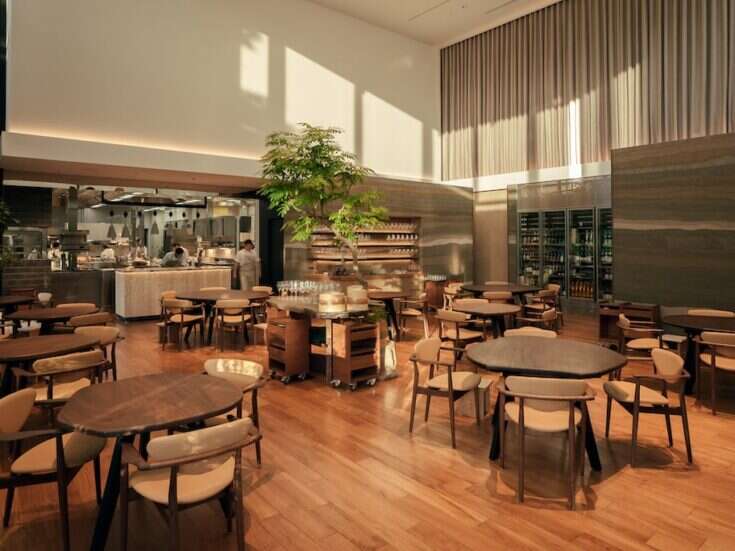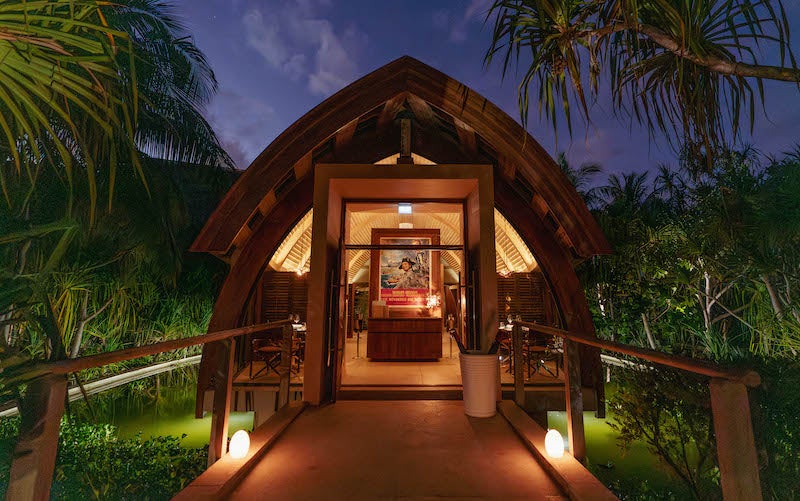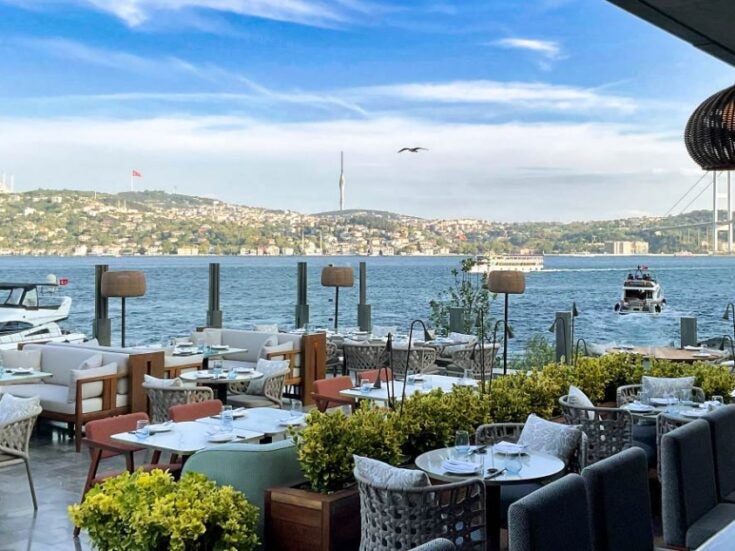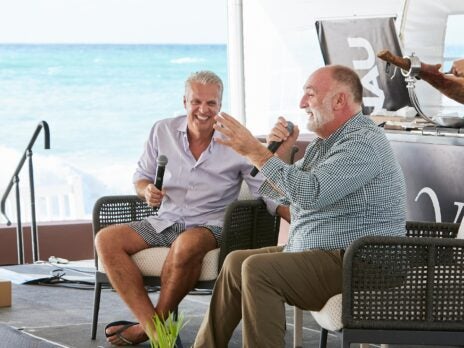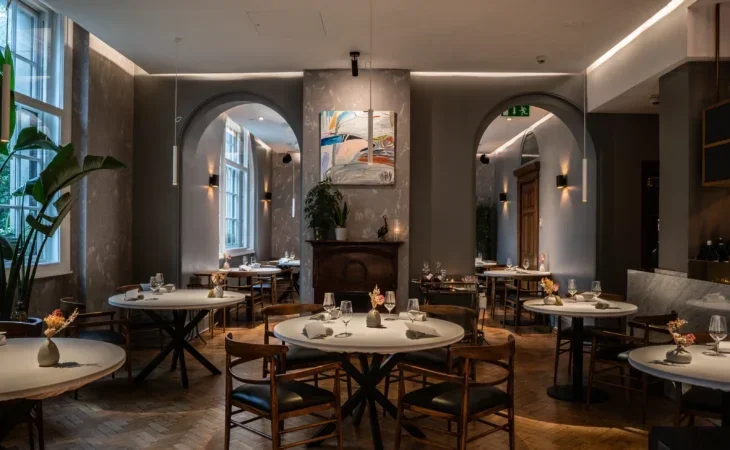
You can find one of London’s 71 Michelin-starred restaurants in almost any neighborhood, stretching from Richmond in the southwest to Stratford in the northeast. However, look only at those with two and three stars and it becomes a lot more clustered. Just 15 have two stars or more and 11 of them can be found in six square miles of prime West London real estate. Fourteen are west of Tower Bridge. The outlier is Da Terra, a restaurant we have been waiting to review for over three years.
Located in Bethnal Green Town Hall, the Brazilian-inspired restaurant landed on fine dining radars in 2019 with the award of its first Michelin star. It was one of the fastest the UK Guide had seen (nine months after opening) and East London’s first inclusion.
A first star made Da Terra something of a novelty, a place for London foodies who actively seek an alternative option. It was the second star, awarded in the very next Michelin Guide, that turned it into a destination in its own right.
Today, it drags well-heeled tourists and discerning gourmands out of their Zone 1 comforts. Those who do are seldom disappointed. What they find is a supremely talented chef pushing the boundaries of London’s fine-dining scene with inventive culinary experimentation.
[See also: Trivet Restaurant, London: A Post-pandemic Success Story]
The chef
Rafael Cagali was born and raised in Sao Paulo, Brazil. Like his own heritage (his father is Italian and his mother is Portuguese, Spanish and Italian), Sao Paulo is a mixing pot of cultures. It was the perfect place for a budding young chef, but Cagali didn’t step behind the pass until he moved to London at the age of 21. His talent was obvious and he was encouraged to go to culinary school by his boss. From there, his rise has been meteoric.
Cagali started his fine dining journey in Lake Garda, working for Stefano Baiocco at Villa Feltrinelli. It was there that Cagali not only learned what it took to earn a Michelin star (the restaurant had none when he arrived but now has two) but also discovered his personal culinary roots.
He went on to work in some of the world’s best restaurants, including Martín Berasategui in San Sebastien and Quique Dacosta in Alicante, both three-star establishments. He then returned to England to finish his education with Heston Blumenthal at The Fat Duck, which has become a breeding ground for Michelin-starred chefs.
His first experience running fine dining restaurants came alongside Simon Rogan (another three-star chef) at three of his former London locations. Only then did he take the leap and open his own venture with his husband Charlie Lee.
As a result of his upbringing and culinary education, Cagali has developed an experimental style of cookery. Although Brazilian flair runs through the heart of Da Terra’s menu, there are nods to classic techniques, molecular gastronomy and even local seasonal produce.
The food at Da Terra
The first thing you notice about Da Terra is its open kitchen, and a unit of well-drilled chefs quietly and methodically going about their work. This is partly because they are good at their job but is helped by the fact that Da Terra serves a no-choice tasting menu priced at £185 ($230). There are 11 courses in all, including canapes and petit fours. The experience takes around three hours, but the time flies by.
The trio of canapes includes a truffle donut, which tastes exactly as you’d expect. A light truffle mousse combines with the fresh sweetness of the dough. Considering Da Terra translates as ‘from the ground’, it’s a fitting start to proceedings. The scallop and stout cup was the pick of the three canapes, offering a real hit of Cagali’s creative edge with two strong flavors perfectly balanced.
We’re welcomed to the main dishes by a delicate Arctic Charr rose. Served with a courgette and fennel sauce, this is something of a palate cleanser after the heavy canapes. The second course has a little more edge to it. Cagali sources leftover rice from the only sake maker in the country to create a fragrant custard that complements wonderfully flavourful Shetland Island mussels and a seaweed cracker.
[See also: Dining gets Personal at Muse by Tom Aikens]
The third course is where the two-star show really begins. We were presented with a plate of truffle and celeriac alongside a rich chicken liver parfait (served in an egg shell), a skewered wing and heart, and a puffed chicken foot. The chicken sauce was rich and a perfect accompaniment for the brioche mushroom, which was presented on a mini woodland scene.
Following some homemade sourdough bread and a trio of butters and bone marrow, we were then presented with a huge copper pot filled with langoustines, turbot, okra and coconut milk. This is Moqueca, a Brazilian fish stew taken from the northeast of the country. The pot was then taken away, refined and re-presented in two-star form.
The finished article is a wonderful sauce served with brown butter, wild turbot, toasted cassava flour and hen of the woods mushrooms. A small pot of green and red chilies was then placed on the side with diners encouraged to crush a chili into the sauce depending on their preference. One red one was enough to light up the dish and bring those meaty turbot flavors to life. An exceptional dish with a touch of drama.
The next dish seemed inspired by a pub favorite: steak and chips. Hereford short rib beef is slow-cooked for 12 hours before being glazed and finished on the barbecue. It’s served with Cassava, a South American root vegetable similar to yams, sweetbread and a wonderful chimichurri sauce. It is deeply flavourful and no doubt a crowd pleaser.
[See also: Native at Browns: Zero-Waste Dining with a Luxury Edge]
Of the three desserts, the one that catches the eye the most is Cagali’s take on a classic rum baba. Instead of rum, Cagali uses cachaca, a spirit derived from sugarcane. The sponge is served with delicate pistachio cream and a generous dollop of N25 caviar. Made in Germany, where sturgeons enjoy warmer climes than usual, the caviar has no fish taste at all. Instead, it provides nothing more than a savory texture to an otherwise very sweet dish.
Other desserts include the Romeo & Juliette, a goat’s cheese tart served with guava (it works) and a delicate barbecued pineapple served with a coconut mousse and fermented pineapple juice.
The menu is still recognizable from 2019, with several dishes surviving the course. As a result, everything was executed to absolute perfection. The plating, in particular, was flawless. The dining room’s intelligent use of lighting only helps to show off the delicate work in the kitchen.
Cagali’s experience at three-Michelin-starred restaurants is evident through his use of high-quality ingredients sourced from all over the world. He is an internationalist at heart and sees no borders in his pursuit of the perfect recipe. He has certainly earned his two stars and a busy Saturday service shows it is resonating with London’s elite.
Da Terra’s interiors
There is no argument that Bethnal Green Townhall was a risk. Formerly the home of The Typing Room, which closed after four years, good chefs have tried and failed to make this 40-cover restaurant work. The kitchen sits at the front of the room with the dining room split in two by a fireplace. They’ve made the most of the large front window by opening the kitchen and giving each table its own overhead spotlight. The walls have been painted a light grey-blue to further emphasize the light and ensure the food’s presentation can be enjoyed by both diner’s eyes and their smartphones.
Da Terra is open Wednesday to Saturday with a lunch service available Friday and Saturday. Contact info@daterra.co.uk, +44 20 7062 2052, daterra.co.uk
[See also: The Most Anticipated Restaurant Openings of 2022]
